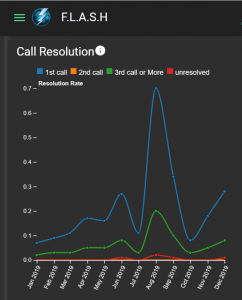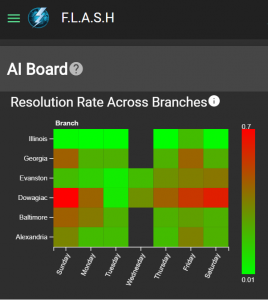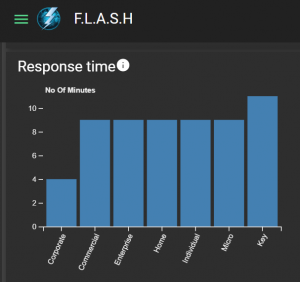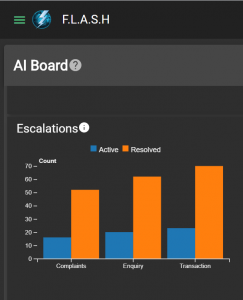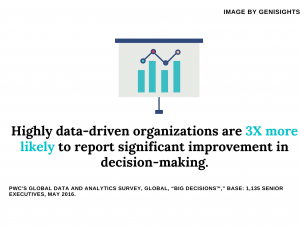 Industry Watch Corner
Industry Watch Corner
The lack of access to physical stores due to the pandemic has increased the traffic for contact centres worldwide. Contact centres are bridging the gap to communicate with customers, emergency helplines, on-call services, and inquiries. Even before contact centre agents were required to work from remote locations, Cisco’s 2020 survey revealed that 62% of decision-makers plan to implement a cloud contact centre in the coming year. 93% agree that technology is very important in creating a better customer experience. Contact centres are a treasure of data waiting to be discovered. They have data acquired through daily processes like telesales, telemarketing, customer surveys, collections by means of outbound services and customer services, emergency response past inbound services. Analyzing contact centre data can help not only the customers but the contact centre decision-makers as well, to improve service and increase efficiency. Artificial Intelligence-based software improves the customer experience by monitoring key phrases and then prompting the agent in giving proactive responses. They can identify challenging calls for agents to handle and route the calls depending on complexity. AI is also gaining popularity through chatbots and solving issues without the need for agent interference. Chatbots need to understand the tone of the customer and respond accordingly. A healthy Contact Centre must conserve excellent hardware and software solutions providing a direct impact on quality assurance/success metrics, call statistics, customer implementation, and proficient Contact Centre agents. Contact centres today can answer more than just calls. Let us look at what other questions can be unraveled through analyzing contact centre data.
1. Is the Customer Satisfied?
According to a 2019 survey by Deloitte Digital, Customer experience or CX is a high priority (57%) among the surveyed centers. Harvard Business Review found in a study that a focus on increasing (Customer Satisfaction) CSAT will help businesses retain 74% of customers for another year leading to a substantial increase in revenue. We can increase customer lifetime value by looking after the key determinants like customer acquisition, customer retention, and customer margin. IVR (Interactive Voice Recording) Systems have been in use recently to reduce the number of calls reaching an actual agent. Valuable insights on the reason for the call, the caller, Opt-out Rate, self-Services rates, and incorrect routes can be evaluated through IVR data.
2. Is your Product facing a regular or common problem?
Collating and categorizing issues is a great way to understand the product. A repeated complaint of the product needs to be fixed for future versions so that customers do not engage in expressing distress and reducing brand value. Categorizing these issues also helps in creating a common answer pool for contact centre employees. AI can be used to direct the calls to Subject Matter Experts to handle issues. This will reduce escalations and help employees with better ways to tackle problems. We can also perform sentiment mining to analyze the sentiment of the customers on service level parameters such as resolution effectiveness, feature variety, etc. by leveraging social media sentiments of the public on various products or services of clients for improved business services.
3. Is your Contact Centre Efficient?
First call resolution (FCR) is an important metric that measures the efficiency of the contact centre to solve issues in the first call. A long waiting time is another factor for low customer satisfaction. Measuring the average delay of calls or the call abandon rate or the response time will give us an idea about the need for more staffing to handle the surge in calls. Response time metrics and call resolution metrics are indicators of efficiency(image below depicts metrics from an AI-driven dashboard, FLASH). Customer Effort Analysis can be performed to measure the efforts spent by customers to get various services rendered through various touchpoints. Customer journey analysis can be used to identify the pain points that customers face while traversing channels for a specific purpose. Path analysis can help identify the patterns in the menu/caller path in a time slot. All metric dimensions can then be evaluated to arrive at actionable insights about the customer segment in qualifying dominant paths, dependent paths, and average time spent on the path, etc.
4. Is your Employee productive?
Average Sales per Agent is the measure of sales that an agent closes within a time period. We can use this metric to award agents performing well and provide targets for employees to work towards. An agent’s Utilization and Average Handle Time are two primary contact centre metrics to focus on when trying to measure an agent’s productivity. We must also be careful of the escalations that an agent faces and train employees who need to improve performance.
5. How many Customers at risk of attrition?
According to contactcenterpipeline.com, Attrition is considered the No. 1 challenge 27% (up from 19.2%) for contact centres in 2020. Measuring the Net Promoter Score or NPS of customers helps us to plan a better approach for managing customers who are at risk of attrition. Predicting churn rate qualifies the steady-state level of customers at any point in the network.
6. Are there any opportunities for Upsell and cross-sell?
Affinity analysis/association rules of mining are used to analyze the co-occurrence of relationships among activities performed by customers and discover the cross-sell/up-sell opportunities accordingly. Recommendation Systems help identify products customers need and help contact centres create personalized offers based on purchase history and products commonly bought together. Use of Uplift Modelling can be used to identify the right set of customers(the persuadable) to be targeted for marketing campaigns.
7. Can your competitor be a reason for low sales?
As contact centres are a hub of engagement, customers often give honest feedback on products. You also find that many potential clients are already using your competitor products. Employee engagement plays an important role in analyzing these potential risks to the business. Predicting the customer churn rate helps to identify the customers who are likely to leave the network.
Contact Centres are now moving into a space of self-service where customers are adapting to emerging artificial intelligence software and chatbots. Customers today do not like waiting for calls to be answered, they would rather finish queries through chatbots that do not consume time. IVR systems are slowly being replaced by intelligent assistants that provide human-like interactions. Having an advanced chatbot and analyzing its response can help you understand your customers. With these forms of service, direct calling and email, data is being collected from multiple sources. Decision-makers need regular reports to keep track of their performance. While automating this data is now a necessity, the use of AI to analyze this data is a competitive advantage. AI-based dashboards give you the insights needed to understand your data. They highlight possible improvements and forecast staffing depending on query traffic. They group dissatisfaction and anger sentiments and analyze agents who deal better with these emotions. Customer sentiments change with time, people are more impatient and now more sensitive due to long hours indoors. Many factors can be associated with good or bad performance and identifying these factors can be tricky for decision-makers. AI learning, analyses your data in real-time and helps you get a holistic view of your business. Analyzing and processing this data turns your contact center into an answering hub. Companies that ignore customer service face an inevitable fate of resentment and destroyed brand image. FLASH, a product by geniSIGHTS ensures your contact centre does more than just calls. FLASH is a one of a kind voice-powered AI tool that gives your contact centre the power to stay ahead of the competition and give highly efficient results. Our solution uses advanced analytical techniques through various statistical models and machine learning algorithms to qualify underlying patterns and mine hidden insights from data. It is lightweight and cloud-based, facilitating analysis at your fingertips even as you sit at home during this lockdown. Contact us at https://flash.genisights.com/ for a demo today.


